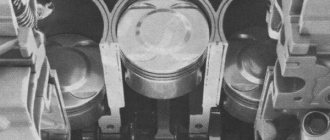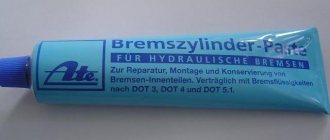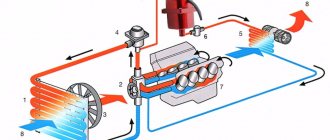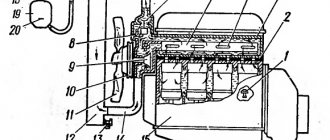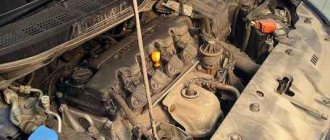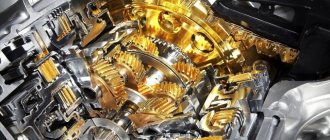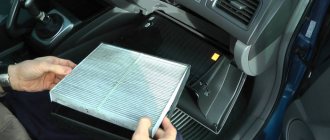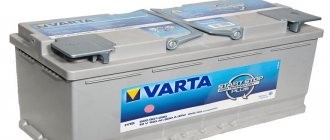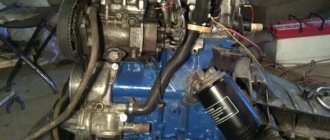Why and is it harmful to wash a car engine?
Today we will learn why it is necessary to periodically wash the internal combustion engine and its main components in a car, as well as how to properly carry out this important process.
In addition, we will tell you about the reasons for washing the engine in a vehicle, what parameters of the car are affected by this procedure, and what the cleanliness of the devices under the hood contributes to. In conclusion, we will talk about how to independently, without the help of specialized sinks and equipment, wash old deposits and stains in the engine compartment of our vehicle, using only available tools and supplies. The appearance of a vehicle can tell others a lot about its owner. If the driver is a caring car owner, then he will always keep his car in well-groomed and inspected condition. And this applies not only to the body and interior, but also to the engine compartment, that is, the engine. Note that if the vehicle is under a dealer’s warranty, then it is best not to even start washing the car yourself, but rather contact a specialized station that professionally deals with this procedure. In other cases, you can and should wash the engine and its components yourself, with your own hands.
The engine washing process is a fairly simple procedure. In order to wash the engine, you just need to be patient and spend a small amount of money on special chemicals to clean the engine from dust, dirt, oil stains and other old deposits. To understand how to properly wash a vehicle engine, you need to understand what and why the above procedure is needed. We will discuss this issue in our story, so as not to flood the electrics and get a detailed understanding of the rules for washing the engine compartment, and especially the internal combustion engine.
The engine washing process is a fairly simple procedure. In order to wash the engine, you just need to be patient and spend a small amount of money on special chemicals to clean the engine from dust, dirt, oil stains and other old deposits. To understand how to properly wash a vehicle engine, you need to understand what and why the above procedure is needed. We will discuss this issue in our story, so as not to flood the electrics and get a detailed understanding of the rules for washing the engine compartment, and especially the internal combustion engine.
The fact is that the dirt that is on engine parts makes it difficult to control the leakage of technical fluids, such as engine oil, coolant and brake fluid. Unfortunately, when malfunctions occur in the car, the car owner will not be able to detect the breakdowns in time and in conclusion runs a high risk of getting more significant problems. The next negative reason that you need to periodically wash the engine is dirt deposits, which impede heat transfer from the engine and increase the chances of it overheating. This accelerates the wear and tear of the engine and its components.
If we consider the dirt that forms on car electrical wiring, then it can make it quite difficult to start the engine, since electric current leaks in the system. In addition, a very important point of a clean engine is that it is less fire hazardous. The fact is that engine oil leaks that form in the engine compartment create flammable vapors, which can lead to ignition of oil-coated engine components. We also note that clean parts in the engine compartment are easier to maintain and repair. Please note that some service stations simply refuse to accept vehicles with a heavily contaminated engine and its components.
Disadvantages of engine washing
- Drying . If the engine is not sufficiently dried, moisture can damage the electrical wiring.
- Pressure of water jets . When cleaning the engine, the pressure of the water jet may be too strong, which is dangerous not only for the rubber tubes of the engine, but also for other parts. This applies to a greater extent to gasoline engines.
- Electronics . It’s good when there is a plastic casing over all the insides, which can be removed and washed separately, but this phenomenon is present in high-class cars, and the simplest but modern cars have unprotected electronics, which, as mentioned earlier, are not friendly to water.
- Difficult to maintain . You can’t find a good car wash everywhere and you can’t always wash the engine yourself.
- In fact, in some cases it is much more dangerous to wash the engine than the other way around. , flooding of the spark plugs may occur .
As a result, you don’t want to force anyone to wash or not wash a car engine. This is a personal choice for everyone . It's worth weighing the pros and cons. But the best outcome will be a golden mean. Not washing the engine at all is bad and even dangerous; washing it constantly is also not the best option. Washing once or twice a year is enough to keep your car in good condition. But you need to wash it only in special services. What you need to know about them will be discussed further.
How to use cleaners
The best solution would be to closely adhere to the manufacturer's instructions. Each company that produces auto chemicals can use different reagents that have their own effects, so it is impossible to create general instructions for all these substances.
The general principle for each of these types of cleaners is as follows:
- Aerosol and manual trigger . Typically, such a substance is sprayed onto the surface to be cleaned. Wait a while. After this, the dirt is wiped off with a rag.
- A foaming product , such as car shampoo or body wash gel, is usually diluted in water to create a foam. It is applied to the surface to be cleaned, also waited for some time, and then removed with a wet rag or washcloth.
There are also products that are added to water for cleaning with steam or contactless washing. But we have already talked about the dangers of using such methods.
Pros and cons of the procedure
Proponents and opponents of engine washing put forward quite convincing arguments. Among the advantages of the procedure, the following are noted:
- washing helps to extend the life of the motor, and the metal from which it is made can be destroyed under a layer of contamination;
- identifying and eliminating breakdowns is easier the smaller the layer of dirt;
- fire safety increases.
But there are more disadvantages:
- modern engines do not get dirty so quickly, but they contain a lot of complex electronics that do not like water: there is a risk that the car will not start at all;
- Corrosion may occur over time on wet metal surfaces and connectors;
- the risk of water getting into the engine cylinders, which will result in water hammer and – replacement of the power unit;
- harm from using auto chemicals.
The most dangerous is washing with a Karcher. If necessary, it is better to resort to steam cleaning, but you need to be prepared that this procedure is more expensive.
There are advantages and disadvantages to the washing procedure
Why can't you wash engines at self-service car washes?
Many motorists who use the services of self-service car washes have noticed that they are prohibited from washing the engine compartment. You can wash the body, vacuum the interior, pump up the tires, but washing the engine is prohibited. Why does such a restriction exist and why was it introduced?
I washed, but not all
The rules for using a self-service car wash usually state that engine washing is prohibited, since the equipment is not intended for this purpose. Moreover, all drivers are warned of dangerous consequences if this rule is violated. The car wash declines all responsibility if, after washing the engine, it breaks down and does not start. Of course, no one will openly prohibit drivers from washing their engines, especially since there is simply no one to do this, since there are simply no employees at the self-service car wash. Each car owner makes his own decision whether to wash or not wash.
Legal subtleties
This ban is more of a legal nature. Thus, the owner of the washing complex relieves himself of responsibility for possible damage to the engine. After all, if this inscription were not there, then in the event of any problems with the engine after washing, the car owner could file a lawsuit against the car wash. If the equipment is intended for washing cars, then it should not damage them.
Does dirt affect engine performance?
There is an opinion that heavy dirt under the hood interferes with normal engine cooling. This sounds quite logical and reasonable, but it is important to remember that modern internal combustion engines are primarily liquid-cooled - that is, antifreeze moves through special channels in the engine jacket and cools in the radiator using an incoming air flow or a fan.
In addition, some drivers believe that a dirty engine heats up more. Is it so? Yes this is true. For example, the temperature regime will definitely be disrupted if the radiator of the cooling system is clogged (which is not surprising in cars under the hood of which the layer of dirt is thicker than on the tires of an SUV that has just returned from the thicket of an autumn forest). However, if we talk not about specific, but about general cases, rest assured - dirt under the hood will never cause overheating.
Why wash your car engine
Washing a car engine is not mandatory, remaining entirely at the discretion of the car owner. However, there are objective arguments in favor of periodic engine cleaning.
- A dirty engine can hide leaks of liquids – oil, antifreeze – from the car owner’s attention. A clean engine makes it easier to notice any leaks.
- Contaminated engine parts have reduced power characteristics, which is associated with insufficient engine cooling, increased fuel consumption, and accelerated wear of unit parts.
- The accumulation of a layer of dirt and oil drips is a fire hazard: the engine may overheat or catch fire.
- Electrical wiring malfunction due to accumulated dirt. Difficulties arise in starting the engine due to current leaks, leading to a malfunction of the starter.
- From an aesthetic point of view, checking the oil level is much more pleasant and convenient with a clean engine compartment.
If such arguments do not frighten you, there are certain situations in which washing cannot be avoided:
- in case of severe contamination or oil leakage associated with a breakdown;
- before major repairs or other types of work to replace engine components;
- during diagnostic activities;
- when selling a car.
How to choose an engine cleaner
In auto chemical stores you can find many different substances that can effectively clean the engine of any contaminants. The most budget option is car shampoo, but it requires more water to wash it off the treated surface. In some cases, such a product may not cope with serious stains.
For this reason, for greater effect, it is better to use one of the store-bought cleaners. They are implemented in the form:
- Aerosol;
- Manual trigger;
- Liquids with high foam formation.
An aerosol is most effective at removing dirt in the engine compartment, and removing its residue is much easier. Spraying using a trigger has a similar effect, but in this case the consumption of the substance will be greater. If you use a foaming agent, you must also ensure there is enough clean water to rinse the rags.
How to properly wash a car engine
You can do the washing yourself or contact a professional. However, even when contacting a specialized service, knowing the features of the process is necessary to control the process. In general, experts believe that washing an engine in good condition is harmless and only brings benefits, extending its service life.
So, the rules for safe engine washing:
- Do not wash a hot or cold engine. The engine temperature should be 30-40 degrees. Washing water is 10 degrees higher or lower than the engine temperature.
- Before the procedure, it is necessary to protect the air intake, alarm, and wiring from water. The battery must be removed completely or the terminals removed and protected from water by sealing it with polyethylene and tape.
- Cover the factory stickers with tape.
- Do not clean the engine with oils, kerosene or other flammable substances due to the risk of fire.
- It is necessary to use only professional auto chemicals and a special cleaning product. It is prohibited to use household products.
- It is important to dry the parts thoroughly using a vacuum cleaner, a special washing machine, or simply start the engine and stand with the hood open for 15-20 minutes.
Improper washing or failure to follow the rules can lead to serious damage. If you do not protect electrical equipment well enough from water, you may experience a malfunction, short circuit, or damage to the generator. When using flammable substances as a cleaner, a fire may occur, and too much water pressure during washing will lead to failure of a number of parts.
Washing technologies
Today, two technologies are used that may have internal variations (except, of course, for washing the engine by hand): Karcher washing and dry washing.
Washing using Karcher installations
The technology involves the use of special Karcher equipment, which uses a jet of hot water under pressure to remove dirt from the engine compartment. Before the procedure, special detergents can be applied to car parts to dissolve oily deposits. It is also practiced to use “Kärcher” without additional detergents. It is believed that the Karcher can damage the car, since due to the strong pressure, water can penetrate the generator or electronics. So is it possible to wash a car engine with a Karcher? It is possible, but only in cases of extreme necessity and in the absence of other means.
Dry wash
Steam washing technology is more modern and has more advantages, since it does not carry the same risk for engine compartment parts as a full-fledged water procedure. Cleaning operations are carried out with a special steam generator with a lot of attachments that make every corner of the engine compartment accessible. Steam is supplied under pressure sufficient to knock off dirt. The steam may contain reagents that help dissolve contaminants more effectively.
You can also perform a form of dry washing by hand. To do this, a special foam external cleaner is applied to the engine. After a few minutes, it will dissolve the dirt and it can be removed with a rag or brush. Naturally, this method is not used in car washes, since it is too labor-intensive and does not guarantee high-quality cleaning.
Is it possible to wash the engine yourself?
Of course you can! Self-washing is considered less dangerous (if you do not use explosive or chemically aggressive detergents) than washing at a car wash, since it becomes possible to more thoroughly isolate the contacts, adjust the water pressure, and select a high-quality detergent.
Some tips on how to properly wash a car engine with your own hands.
Choice of product:
- Do not use household detergents, or use acetone, kerosene and other flammable materials as a solvent for oily deposits;
- The right choice is special detergents intended for cars, of which there are a lot on sale.
Car preparation:
- the engine should be slightly warm;
- The battery must be disconnected and removed;
- The wiring at the joints must be wrapped with waterproof materials (insulating tape, adhesive tape).
The water pressure should not be strong, and the temperature should not be high (the norm is room temperature). After washing, the engine should dry, you can speed up the process with a vacuum cleaner and run the engine for 10-15 minutes - the remaining water will evaporate.
There are no special instructions in the technical literature regarding the frequency and technology of washing. However, it should be noted that this procedure is necessary only when the engine is heavily soiled, and not for prevention.
